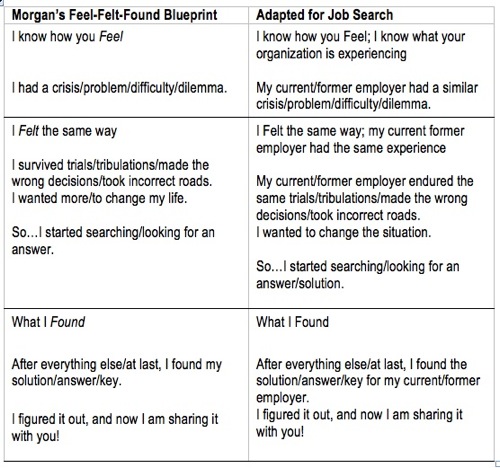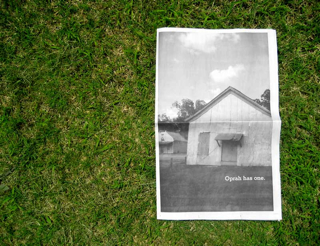It’s time for another one of my roundups of storytelling news and views that have been experiencing considerable buzz in the Twitterverse. My usual buzz test is that an item continues to be re-tweeted by multiple people (not that all re-tweeted items are buzz-worthy, in my opinion). If these much-re-tweeted items align with what I like to cover in A Storied Career, I list them here every month or so. Here’s the storytelling buzz from the Twitterverse since my last update:
-
- “We Operate Best Together: Mapping the Stories of Social Change & Innovation Worldwide,” was a much-re-tweeted project, in part because its founder, Morgan Sully (pictured), was trying to reach a fundraising goal on site called Kickstarter, so he tweeted a great deal about the project and asked others to as well. He met the goal — $1,500 from 32 people. The project asks the question, “How is social change made in spaces where media, technology and creative people meet?” Sully asked backers to “help [him] tell the story this summer.”

- Sometimes items don’t really get re-tweeted all that much, but I just think they’re cool, like this quote attributed to Gloria Steinem by @randomdeanna: “Humans have been storytelling for 100,000 years around the campfire; the media is now our campfire” or this thought by @Darrell_Nelson: “Storytelling and blogging [are] the ubiquitous wallpaper of the postmodern era.”
- Storytelling-in-nonprofits evangelist Andy Goodman is quoted as saying, “Make your mission statement a story. People identify with other people. Storytelling helps us remember,” at the National Conference on Volunteering and Service.
 I would be really interested in seeing mission statements that could be considered a story. Anyone have any nominations?
I would be really interested in seeing mission statements that could be considered a story. Anyone have any nominations? - A campaign to raise money to connect people to municipal water systems was touted as “very simple storytelling” and was highly re-tweeted. The first page of the campaign is pictured below.
- “We Operate Best Together: Mapping the Stories of Social Change & Innovation Worldwide,” was a much-re-tweeted project, in part because its founder, Morgan Sully (pictured), was trying to reach a fundraising goal on site called Kickstarter, so he tweeted a great deal about the project and asked others to as well. He met the goal — $1,500 from 32 people. The project asks the question, “How is social change made in spaces where media, technology and creative people meet?” Sully asked backers to “help [him] tell the story this summer.”
- An item in the Christian Post Reporter by Lillian Kwon, “Improving the Storytelling of the Gospel,” garnered attention. Kwon reported on Ben Arment, who is bringing together “six ‘master’ communicators of the Gospel to one stage for what he calls a ‘theatrical conference experience.'” Further,
The fall event, called “Story,” will feature music, drama, comedy and interactive exchanges with attendees. The goal is to create a place where Gospel communicators can be inspired to be better and more effective at what they do.
Arment apparently feels most preachers deliver the Gospel in a dry, academic manner.
- Much re-tweeted was this article from Variety, “Transmedia storytelling is future of biz.” The article notes that transmedia storytelling is “a new tool [that] has emerged to help those who want to extend film and TV properties across multiple platforms” and defines the tool as “developing a piece of intellectual property in a consistent manner across multiple media platforms.”

- Not exactly a new concept to many readers of this blog was the buzzed-about article on Forbes.com, “The CEO As Storyteller In Chief,” in which Sangeeth Varghese cites Howard Schultz of Starbucks and Bill Gates as CEOs who’ve told a good story and states: “A CEO who has a great story and tells it has a much easier time reaching out to people, connecting to them and creating a sustainable community of them, than anyone who relies entirely on data points and charts has.”
- Of more substance was the attention-getting piece about “movie mogul” Peter Guber on Knowledge@Wharton, “Peter Guber on Sharing Stories, not Just Information, to Communicate Effectively,” and the accompanying transcript of a podcast interview with Steve Ennen, “Hollywood’s Peter Guber: Spinning Memos into Tales,” in which Guber says:
… we are all wired as storytellers. The amazing thing is we’re all born as storytellers and story-listeners and somehow we don’t venerate its value. It’s only later in our life that we … wonder why this [leadership strategy] is working or why it’s not working. My mission is to … empower [people] to be better storytellers [and better] story listeners for the purpose of realizing their own success….
- Even though I already blogged about it here, I’d be remiss if I didn’t report that Michael Margolis’ excellent piece, “Finding Meaning and Authenticity in the Storytelling Brand,” enjoyed significant buzz.
- There wasn’t enough to Chris Albrect’s blog entry, “For Online Storytelling, What Is “Participation,” Anyways?” for me to really grasp it, but it sure did get re-tweeted. The entry is a brief rumination based on Albrecht’s participation on a panel at a conference that discussed the “evolving nature of participation in online storytelling.”
- Though dated last September, an academic journal article by PJ Manney (Disclaimer: I haven’t had a chance to read it in full), was notable in the Twitterverse.
 The abstract of the article, “Empathy in the Time of Technology: How Storytelling is the Key to Empathy,” states, in part:
The abstract of the article, “Empathy in the Time of Technology: How Storytelling is the Key to Empathy,” states, in part:
Practically, empathy is created through storytelling, which is not only the most successful remote means of creating social empathy, but has actually been the engine of social/cultural liberalization and change. I will demonstrate both the positive and negative affects on empathy through the increasing reliance we have on transhuman media technologies and how I believe storytelling is the key to empathy creation.
- An entry in the blog Organizational Perspectives, “Storytelling and Organizational Culture Change,” seemed to spin, in part, off the also-re-tweeted piece on HarvardBusiness.org by Peter Bregman, “A Good Way to Change a Corporate Culture,” as well as off Steve Denning’s work. The apparently un-bylined blog piece asks:
How can you develop “dramatic” stories and how can you share them in a way that promotes trust and builds successful collaboration? As well, it is important to ask how to shift the organization’s narrative from the typical rehashing of problems to an inspiring, aspirational narrative representing the culture we want to create?
- And … more than five weeks after my last report on storytelling buzz
 in the Twitterverse, at which time people were gushing en masse about the Pixar movie, Up, people are still gushing about the amazing storytelling in the film. A good interview with some of the key players is It’s Gotta Be the Storytelling: The Makers of Up Discuss the Secret of Pixar’s Success.
in the Twitterverse, at which time people were gushing en masse about the Pixar movie, Up, people are still gushing about the amazing storytelling in the film. A good interview with some of the key players is It’s Gotta Be the Storytelling: The Makers of Up Discuss the Secret of Pixar’s Success.
Finally, I spotted two more oft-re-tweeted items — real gems, in fact — but I’m saving them for my next video and/or visual storytelling roundup. Stay tuned.

